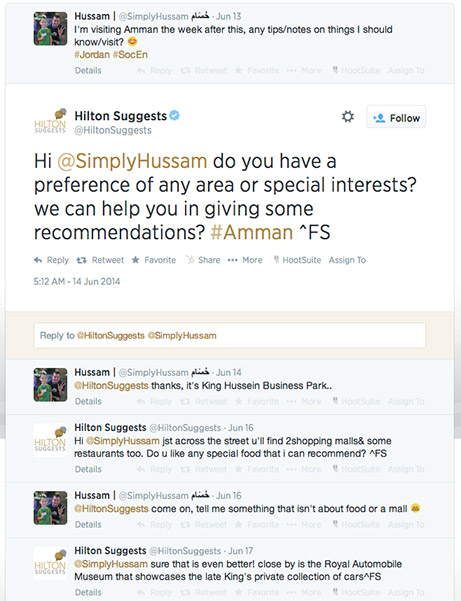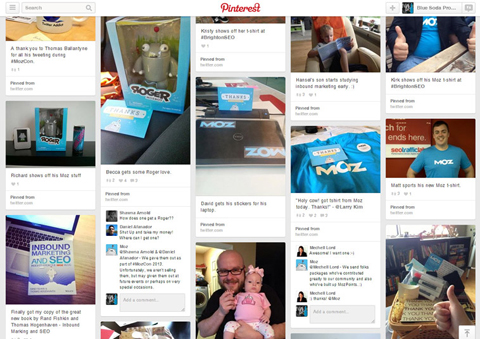 Do you segment and track leads?
Do you segment and track leads?
Are you reaching the right people at the right time?
Before customers buy your product or service, they go through a process of discovery, learning and understanding.
Customizing your social tactics based on the buying stage increases sales.
In this article you'll discover tactics that engage customers at each buying stage and move them toward the final sale.
Why Segment for Each Buying Stage
Tailoring your marketing tactics to a lead's specific buying lifecycle stage ensures you're making the biggest impact, shortening the sales cycle and increasing your overall top-to-bottom conversion rates.

But how do you know which lead is where? Start by mapping and connecting each stage of your buyer's journey to various conversion points or actions with your company. Look at your marketing automation platform and create lists based on contacts who have already converted at each buyer stage.

Be sure to sync your marketing automation platforms and customer relationship management (CRM) so you can easily transfer the stages back and forth as your sales team converts leads. This kind of closed-loop tracking is key for the segmentation process and properly reporting your marketing efforts.
Below are the four stages of the buyer lifecycle and suggestions on how to market at each stage.
#1: Offer Information and Resources
At the top of the decision-making process is the information stage. This is where leads suspect they have a problem, but they need more information to confirm the problem and understand how to solve it.
Leads at this early stage typically have a lot of questions. They're hungry for information, recommendations and opinions from their friends. It's common for them to turn to social media to talk to others.
At this point, your leads aren't interested in your products or services and are turned off by sales pitches or promotions. As a marketer, your tactic here is to be as helpful as possible. Offer information and resources as needed—especially if you've created them—to draw your leads in and capture their interest.

To find people asking questions, set up social monitoring searches that alert you when updates include industry words, question marks and industry mentions + question marks.
Get World-Class Marketing Training — All Year Long!
Are you facing doubt, uncertainty, or overwhelm? The Social Media Marketing Society can help.
Each month, you’ll receive training from trusted marketing experts, covering everything from AI to organic social marketing. When you join, you’ll also get immediate access to:
- A library of 100+ marketing trainings
- A community of like-minded marketers
- Monthly online community meetups
- Relevant news and trends updates
Even if a question and your subsequent answer have nothing to do with your industry or products, the fact that you're going out of your way to help makes a big impression—they'll likely remember you as they move through their decision process.
Hilton developed one of the best examples of this principle with their @HiltonSuggests initiative. Essentially acting as a virtual concierge, Hilton's social media team keeps an eye out for anyone asking questions about cities with Hilton hotels.
Whether someone is asking about the best Italian restaurant or for directions to the city market, @HiltonSuggests is quick to answer.

Schedule time each day to proactively engage your audience, and more importantly, the established leads in your system. Interact with them on the same level you would with your personal friends by commenting on their posts, sharing photos with them and joining in their conversations.
#2: Show Product Value
When leads are comfortable with the information they've found and are ready to address their problem or need, they move into the consideration stage. This is where they establish criteria to evaluate different products or services that will solve their problem or meet their need.
You've already set the stage by sharing useful information. Now it's time to help them evaluate their options. This includes educating them about your product or service's different features and how those features help them.
Although leads in this stage are more open to exploring your company, they still aren't ready for a hard sell.
To help leads continue to feel comfortable—and move them toward the decision phase—I suggest you develop a subtle but innovative social campaign that showcases your product's unique selling proposition (USP) in a non-traditional, entertaining way.

Discover Proven Marketing Strategies and Tips
Want to go even deeper with your marketing? Check out the Social Media Marketing Podcast! Publishing weekly since 2012, the Social Media Marketing Podcast helps you navigate the constantly changing marketing jungle, with expert interviews from marketing pros.
But don’t let the name fool you. This show is about a lot more than just social media marketing. With over 600 episodes and millions of downloads each year, this show has been a trusted source for marketers for well over a decade.
One of the best examples of a creative showcase is the Will It Blend campaign by Blendtec. The company's USP is that their blenders are the most powerful on the market.
To show how powerful their blenders are, Blendtec takes various household items, puts them in their blenders and chops them up. The novelty draws millions of views on YouTube and reinforces their USP.
For example, when Apple launched a new iPad, people were naturally talking about the new tablet. Blendtec purchased one and shredded it in one of their blenders. The buzz around the iPad release amplified the Blendtec video.
#3: Demonstrate Positive Results
Information and education have guided your leads to the all-important decision stage of your sales funnel. They've likely narrowed down their buying decision to you and one or two competitors.
Leads who have made it this far are the ones most likely to convert. In fact, by the time leads get to the decision stage, it's likely they've already subconsciously made up their mind to purchase your product or service—they just need a reason to consciously rationalize the purchase.
Now is the time to leverage your sales promotion tactics (e.g., discounts, bundling, flash sales, etc.) to convert the lead to a customer.
Most people appreciate seeing exactly how your product or service benefits them personally. Encourage your lead to engage with your sales team via a personalized demo, trial offer or consultation.
https://www.youtube.com/watch?v=qpD0OKbNzXI
Develop mini-case studies—short and to the point—that feature happy customers and analytical data. You may want to invest in a scalable tactic like developing a series of 2- to 4-minute videos that showcase the major selling points of your products or services.
Regardless of your ultimate tactic(s), emphasize the issues previous customers had before they found your product, what it was like working with you and how your service helped them. Leads are interested in learning more about others who have had success as a result of working with you.
#4: Support New and Existing Customers
As you know, it's always easier to sell to an existing customer than to woo a new one. That means even after you've converted your new lead into a customer, your job is far from done.
The true goal of marketers isn't just gaining new customers, it's turning those new customers into lifelong brand advocates. This is the delight stage of the buyer lifecycle.
The key to the delight stage is building strong, long-lasting relationships. The interactions you have with new (and existing) customers should be similar to the interactions you have with friends and family. You want customers to feel like they're a part of something bigger than themselves—part of your larger community.
One way to help your customers feel appreciated is to highlight them via your social media profiles. High-end hipster clothing brand Beta Brand not only shares photos contributed by customers, they give the photos a fun twist with clever branding.

Beta Brand shares the images on their ecommerce site and all of their social channels to create and reinforce positive connections with potential and existing customers.
Beta Brand could stop there, but they go a step further and use submissions in social retargeting campaigns aimed at the contributor's friends. This way the person's friends see a personalized advertisement showing someone they know wearing Beta Brand products. Pure genius.
Want to go a different route? Random acts of kindness are one of the most underutilized tactics in the business world. When you receive a heartfelt unexpected gift, it makes an impact on you, right? You remember that kindness. You can make that same impact on your customers.
Moz is constantly sending out care packages that inspire their advocates to post pictures of their gear all over their own social media profiles. For Moz, this adds to the value of their business and promotes goodwill with advocates.

Budget for random acts of kindness and empower your entire team (sales, customer service, marketing—everyone) to dole them out as they see fit. You can find customers or leads to surprise by creating social listening streams that pull in keywords around specific life events such as weddings, birthdays or anniversaries.
Final Thoughts
The tactics I've discussed here rely on targeting the right people in the right stage of the buying lifecycle. If someone is only in the information stage, you'll find little success by pushing the decision stage too soon.
Take the time to segment your customer databases by stage and use the appropriate tactics to guide them toward a sale.
What do you think? What social media tactics do you use to get more leads? Do you segment your leads into stages of the buying lifecycle? Please share your ideas, questions and comments below and let's get a conversation going.
Sign Directions Support photo from Shutterstock.
Attention Agency Owners, Brand Marketers, and Consultants

Introducing the Marketing Agency Show–our newest podcast designed to explore the struggles of agency marketers.
Join show host and agency owner, Brooke Sellas, as she interviews agency marketers and digs deep into their biggest challenges. Explore topics like navigating rough economic times, leveraging AI, service diversification, client acquisition, and much more.
Just pull up your favorite podcast app, search for Marketing Agency Show and start listening. Or click the button below for more information.

